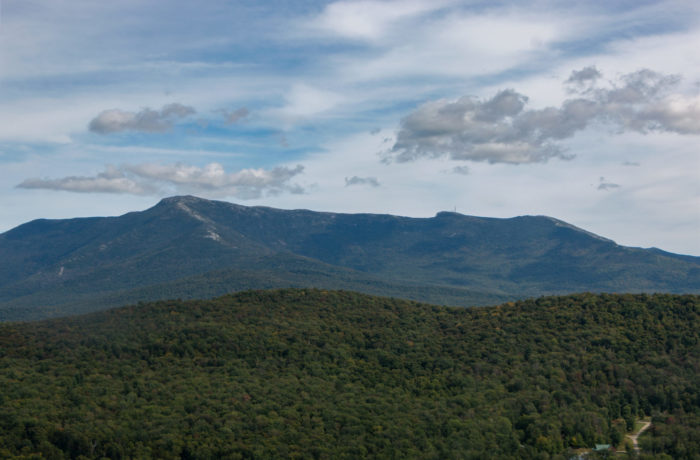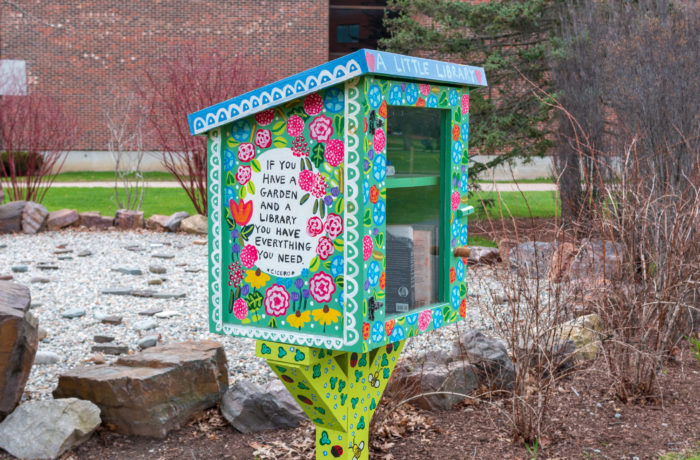
When Amanda Fitzpatrick, ’18, and Nick Ferrigno, ’18, awoke from sleep and left their cocoon-like mosquito nets on the first day of their trip to Costa Rica, the two ventured to the top of La Roca to see a breathtaking sunrise over Palo Verde – a dry tropical forest situated on the country’s northwestern coast.
Fitzpatrick and Ferrigno found themselves in an unfamiliar territory during the final two weeks of their winter break, as they were joined by 10 other St. Michael’s students and biology professors Hope and Constantino on a tour of Costa Rica’s tropical ecology.
Not only was the tour a unique experience during a time of the year when other St. Michael’s students are stuck inside their homes, the visit to Palo Verde marked the first time in over a decade that a dry tropical forest was included during the annual 14-day excursion to Costa Rica.
According to Hope, who has traveled to Costa Rica on 12 separate occasions, including his first trip as a graduate student at UVM to study flowering plant evolution back in 1981, the reason to add a dry forest site back to the yearly tour was to open his students’ eyes to what the world around them is truly like.
“Most of the press is on the wetter forests because of the bigger diversity,” Hope said. “People don’t think about the dry tropical forests as much, and a lot of people don’t even realize that there a lot of areas that are dry.”
Dry forests are more threatened than wetter tropical areas because it’s much easier to convert the land for agriculture. Ferrigno said that the three-day stop in Palo Verde was his favorite part of the exploration of Costa Rica’s rainforests.
“Our expectation was that we were going to go to the rainforest, and we were going to be drenched and hot,” he said. “When we showed up to Palo Verde, because it’s a dry tropical forest, it wasn’t like that at all. There were a lot of birds, a lot of life.”
Although wetter tropical forests offer more biodiversity than drier forests, it’s easier to see more organisms that reside in dry forests like Palo Verde.
According to Hope, the dryness of the forests prevents the trees from being closely staggered together, which allows more sunlight to enter making for easier viewing of different dry forest species easier than wet forest organisms. There are also fewer epiphytes in dry forests, which are plants that grow on other plants, like ferns.
“In the dry forests, it’s easier to go out in the evening because it’s not raining, so it’s more comfortable,” Hope said. “There were a lot of opportunities to see weird things that are out at night in the dry forests.”
Some of the challenges that the students had to deal with while in Palo Verde were transitioning from the cold winters of Vermont to the hot, dry wetlands of Palo Verde’s national park, and sleeping in mosquito nets to prevent mosquitos, other blood-sucking insects and scorpions from entering the beds.
Students also have good things to say about the dry tropical forest.
“We definitely had the most freedom (in Palo Verde),” Fitzpatrick said. “In the other forests there were a lot more guards and certain hours that you couldn’t go into the forest.”

Prior to going on the trip, students have to submit an application and take a two-credit course with the class meeting five times during the fall. The 12-student class breaks into three groups, with one group studying Costa Rica’s economic and political landscape, another studying the conservation status of the country’s ecosystems, and a third studying the main threats that the country sees to its conservation.
Because of the rigorous academic workload that science majors endure, fitting in study abroad can be a challenge. Fitzpatrick and Ferrigno saw the 2-week academic trip to Costa Rica as an opportunity to experience the abroad world and take away knowledge that they may not have otherwise.
“It was really amazing, especially during the winter when you’re so cooped up inside,” Fitzpatrick said.
As climate change continues to make its mark around the world, trips to study a country’s ecology like Costa Rica may take on even more importance.
“People have an anti-intellectual, anti-science bias in one of the brightest countries in the world,” Hope said, referring to the political shift in the United States’ environmental regulation with the Trump administration. “It’s hard to understand, and it’s very discouraging.”
Students and Hope found encouragement from their 14-day expedition of Costa Rica.
“[Costa Ricans] are really good at maintaining the environment and being conscious of the natural life and ecology that’s there,” Ferrigno said. “That’s one of the best parts to see how they do things because you can then take their methods and bring it back home, and educate other people on that.”


